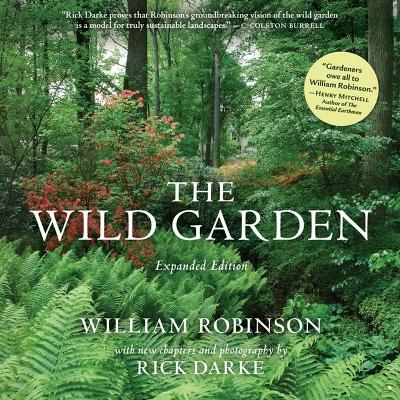Traveller's S.
1 total work
William Robinson's revolutionary book, "The Wild Garden", envisioned an authentically naturalistic approach to gardening that is more vital today than ever before. First published in 1870, "The Wild Garden" evolved through many editions and remained in print through the remainder of the author's lifetime (1838-1935). In the book, Robinson issued a forceful challenge to the prevailing style of the day, which relied upon tender plants arranged in rigidly geometrical designs. In sharp contrast, Robinson advocated for the use of hardy, locally adapted native and exotic plants arranged according to local growing conditions. Robinson's vision was inspired by his first-hand observations of natural habitats in Europe and North America, and he put his ideas into practice in his own garden at Gravetye Manor in West Sussex. "The Wild Garden" was ground-breaking and hugely influential in its day, and is stunningly relevant to twenty-first century gardeners and landscape stewards seeking to adopt sustainable design and management practices.
In addition to the complete original text and illustrations from the fifth edition of 1895, this expanded edition includes new chapters and 112 color photographs by award-winning photographer and landscape consultant Rick Darke. His new material places wild gardening in modern context, underscoring Robinson's importance in the evolution of ecological design and illustrating an inspiring diversity of contemporary wild gardens. The potent combination presented here makes this new edition of a timeless classic an essential resource for all who wish to know how we have arrived at our present understanding of gardens and what opportunities lie ahead. As will be immediately clear to anyone who leafs through this book, Robinson's urgent message continues to resonate.
In addition to the complete original text and illustrations from the fifth edition of 1895, this expanded edition includes new chapters and 112 color photographs by award-winning photographer and landscape consultant Rick Darke. His new material places wild gardening in modern context, underscoring Robinson's importance in the evolution of ecological design and illustrating an inspiring diversity of contemporary wild gardens. The potent combination presented here makes this new edition of a timeless classic an essential resource for all who wish to know how we have arrived at our present understanding of gardens and what opportunities lie ahead. As will be immediately clear to anyone who leafs through this book, Robinson's urgent message continues to resonate.
